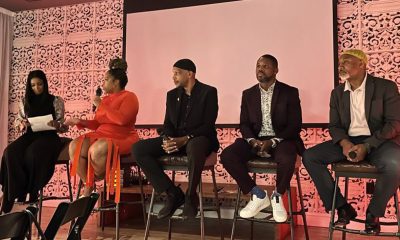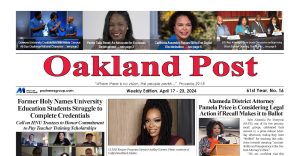#NNPA BlackPress
AUTO REVIEW: 2020 Toyota Corolla
NNPA NEWSWIRE — More than 50 years later, 50 million plus copies have been sold worldwide, making the Corolla the best- selling car ever. And despite a market that has turned sharply towards crossovers and SUVs, Toyota vowed not to turn its back on sedans as it introduced the 12th generation of the Corolla.
By Frank S. Washington, AboutThatCar.com
SAVANNAH, Ga. – If not for the Corolla, Toyota may not have survived in the American car market. It was small, fuel-efficient and reliable which was just what the driving public wanted.
More than 50 years later, 50 million plus copies have been sold worldwide, making the Corolla the best- selling car ever. And despite a market that has turned sharply towards crossovers and SUVs, Toyota vowed not to turn its back on sedans as it introduced the 12th generation of the Corolla.
Other than the wheelbase, which is still the same at 106.3 inches, everything else has changed. The car is wider. The front overhang has been shortened while the rear overhang has been lengthened. Neither by much but enough to improve the overall balance of the car.
For 2020, the Corolla is shorter overall. The hood has been lowered by 1.4 inches and the center of gravity has been lowered. They also lowered the side view mirrors and attached them to the front doors. What all this “lowering” has done is create an open airy passenger cabin.
The front seats were redesigned and I found them very comfortable, sort of form fitting, especially around my lumbar. Even the backseats, traditionally a cramped area in compact cars, were relatively comfortable. I had a good bit of leg room as well as ample headroom.
Toyota has created a Corolla for just about every driving appetite in the community. There were six trim lines and for the first time there is a hybrid.
The L, LE and LV HV are for entry-level consumers. The SE is for the sporty minded. It has two transmissions, a six-speed manual and a CVT with a first gear that gave it some snap. The XLE is, in a word, loaded. The XSE as Toyota put it, represents the best of both worlds.
Count the hybrid and there were three engine offerings. The gasoline electric had a 1.8-liter four-cylinder engine that made 121 horsepower and 105 pound-feet of the torque. It had a CVT, regenerative brakes and the Nickel Metal hydride battery was under the rear seat.
That gave it a lot of balance and the car didn’t see too heavy for the suspension. Toyota continues to stick with the nickel metal battery. Though heavier than Lithium-ion and more power dense, nickel metal costs less. Sometimes money does matter. This engine was rated 53 mpg in the city, 52 mpg on the highway and 52 mpg combined.
Well this was a hybrid and it had all the characteristics of such an engine. On one hand, it was extraordinarily quiet, smooth and certainly fuel-efficient, though we didn’t drive it that far. On the other hand, there was no power to speak of as with most small engine hybrid engines.
The 1.8 liter four-cylinder engine used in the gasoline-powered Corolla made 139 horsepower and 126 pound-feet of torque. With the manual, the L trim got 30 mpg in the city, 38 mpg on the highway and 33 mpg combine. With the CVT it got the same mileage. In XLE trim, it got one mile per gallon less across the board.
The 2.0-liter four-cylinder made 169 horsepower and 151-pound feet of torque. It had a combination of direct and port injection. It got 29 mpg in the city, 36 mpg on the highway and 32 mpg combined with the manual transmission. The CVT got 31 mpg in the city, 40 mpg on the highway and 34 mpg combined. The XSE got two miles less per gallon on the highway.
I didn’t get the chance to drive the 2.0 litre engine, but the staffers told me there was a big difference between it and the 1.8 litre engine — 30 more horsepower to be specific. However, I did test drive a Corolla Hatchback with that engine upon my immediate return. It was waiting for me at the airport.
Anyway, the hatchback had a CVT, thus, not much oomph was gained through the increase of horsepower. That’s the problem with CVTs, their power is subtle.
However, the upside was that this car got 32 mpg in the city, 42 mpg on the highway and 36 mpg combined. The downside was that the hatch lost rear passenger compartment space. That’s what happens when you lop off the trunk of a vehicle.
Still all of the engines on the latest model Corolla were solid with enough oomph to handle everyday driving. These compact cars have never been that big on power and the same holds true for the new ones even though they were more powerful and fuel-efficient.
The Corolla’s strength derived from mechanics, equipment and reliability. An eight-inch touch infotainment screen dominated the interior, which was really clean looking. Toyota engineers went so far as to eliminate unnecessary lettering on switch gear to enhance the minimalist look.
Depending on the trim, the new Corolla was equipped with ambient lighting but of course during the day we didn’t get the chance to see the full effect. There was a 4.2-inch TFT multi-information display in front of the driver located between the speedometer and odometer.
They lowered the hip point almost an inch and moved it an inch and half reward. The result was a lot more space and that equaled more comfort. And the car drove lighter.
Everything about the 2020 Toyota Corolla was trimmer. They lowered the belt line, slimmed down the instrument panel, and slimmed down the A pillars. Along with lowering the side mirrors, this created a car with elbow room and unobstructed visual sight lines.
Sound absorbing sealers, foams and silencers along with the new architecture rendered a really quiet automobile. Other than the engine under hard acceleration, I don’t remember hearing any road noise or wind noise.
It is all about connections in today’s car world. The 2020 Toyota Corolla has what you’d expect: satellite radio, voice controls and Bluetooth. But it also had Apple CarPlay, Amazon Alexa and Scout GPS. What’s more, a Toyota executive told us that Android Auto is on the way.
Oh, the 2020 Corolla has its own Wi-Fi connect that can service five devices. It’s got a 24-hour live concierge service, remote connect, service connect and safety connect.
Standard is Toyota Safety Sense 2.0. It is comprised of a pre-collision system that includes pedestrians and bicycles, adaptive cruise control, lane departure alert with steer assists, lane tracing assist, automatic high beams, road signage assist, blind spot monitor and brake hold.
Prices start at $19,500 for the L, $19,950 for the LE, the SE with a CVT starts at $21,950, with a manual transmission the SE starts at $22,650, the XLE starts at $23,950, the XSE starts at $25,450 and the Hybrid starts at $22,950. Add a $930 freight charge to all base prices.
This is far and above what was offered on the Toyota Corolla 50 years ago, but the car remains in the top tier of today’s compact cars.
Frank S. Washington is editor of AboutThatCar.com
#NNPA BlackPress
Beloved Actor and Activist Louis Cameron Gossett Jr. Dies at 87
NNPA NEWSWIRE — Louis Gossett Jr., the groundbreaking actor whose career spanned over five decades and who became the first Black actor to win an Academy Award as Best Supporting Actor for his memorable role in “An Officer and a Gentleman,” has died. Gossett, who was born on May 27, 1936, in Brooklyn, N.Y., was 87. Recognized early on for his resilience and nearly unmatched determination, Gossett arrived in Los Angeles in 1967 after a stint on Broadway.
The post Beloved Actor and Activist Louis Cameron Gossett Jr. Dies at 87 first appeared on BlackPressUSA.

By Stacy M. Brown
NNPA Newswire Senior National Correspondent
@StacyBrownMedia
Louis Gossett Jr., the groundbreaking actor whose career spanned over five decades and who became the first Black actor to win an Academy Award as Best Supporting Actor for his memorable role in “An Officer and a Gentleman,” has died. Gossett, who was born on May 27, 1936, in Brooklyn, N.Y., was 87. Recognized early on for his resilience and nearly unmatched determination, Gossett arrived in Los Angeles in 1967 after a stint on Broadway.
He sometimes spoke of being pulled over by law enforcement en route to Beverly Hills, once being handcuffed to a tree, which he remembered as a jarring introduction to the racial tensions of Hollywood. In his memoir “An Actor and a Gentleman,” Gossett recounted the ordeal, noting the challenges faced by Black artists in the industry. Despite the hurdles, Gossett’s talent shone brightly, earning him acclaim in groundbreaking productions such as “A Raisin in the Sun” alongside Sidney Poitier. His Emmy-winning portrayal of Fiddler in “Roots” solidified his status as a trailblazer, navigating a landscape fraught with racial prejudice.
According to the HistoryMakers, which interviewed him in 2005, Gossett’s journey into the limelight began during his formative years at PS 135 and Mark Twain Junior High School, where he demonstrated early leadership as the student body president. His passion for the arts blossomed when he starred in a “You Can’t Take It With You” production at Abraham Lincoln High School, catching the attention of talent scouts who propelled him onto Broadway’s stage in “Take A Giant Step.” His stellar performance earned him the prestigious Donaldson Award for Best Newcomer to Theatre in 1952. Though initially drawn to sports, Gossett’s towering 6’4” frame and athletic prowess led him to receive a basketball scholarship at New York University. Despite being drafted by the New York Knicks in 1958, Gossett pursued his love for acting, honing his craft at The Actors Studio under the tutelage of luminaries like John Sticks and Peggy Fury.
In 1961, Gossett’s talent caught the eye of Broadway directors, leading to roles in acclaimed productions such as “Raisin in the Sun” and “The Blacks,” alongside legends like James Earl Jones, Cicely Tyson, Roscoe Lee Brown, and Maya Angelou. Transitioning seamlessly to television, Gossett graced small screens with appearances in notable shows like “The Bush Baby” and “Companions in Nightmare.” Gossett’s silver screen breakthrough came with his role in “The Landlord,” paving the way for a prolific filmography that spanned over 50 movies and hundreds of television shows. From “Skin Game” to “Lackawanna Blues,” Gossett captivated audiences with his commanding presence and versatile performances.
However, his portrayal of “Fiddler” in Alex Haley’s groundbreaking miniseries “Roots” earned Gossett critical acclaim, including an Emmy Award. The HistoryMakers noted that his golden touch extended to the big screen, where his role as Sergeant Emil Foley in “An Officer and a Gentleman” earned him an Academy Award for Best Supporting Actor, making him a trailblazer in Hollywood history.
Beyond the glitz and glamour of Hollywood, Gossett was deeply committed to community activism. In 1964, he co-founded a theater group for troubled youth alongside James Earl Jones and Paul Sorvino, setting the stage for his lifelong dedication to mentoring and inspiring the next generation. Gossett’s tireless advocacy for racial equality culminated in the establishment of Eracism, a nonprofit organization dedicated to combating racism both domestically and abroad. Throughout his illustrious career, Gossett remained a beacon of strength and resilience, using his platform to uplift marginalized voices and champion social change. Gossett is survived by his children, Satie and Sharron.
The post Beloved Actor and Activist Louis Cameron Gossett Jr. Dies at 87 first appeared on BlackPressUSA.
#NNPA BlackPress
COMMENTARY: D.C. Crime Bill Fails to Address Root Causes of Violence and Incarceration
WASHINGTON INFORMER — The D.C. crime bill and so many others like it are reminiscent of the ‘94 crime bill, which produced new and harsher criminal sentences, helped deploy thousands of police and surveilling methods in Black and brown communities, and incentivized more states to build prisons through a massive infusion of federal funding. While it is not at the root of mass incarceration, it significantly accelerated it, forcing a generation of Black and brown families into a never-ending cycle of state-sanctioned violence and incarceration.
The post COMMENTARY: D.C. Crime Bill Fails to Address Root Causes of Violence and Incarceration first appeared on BlackPressUSA.
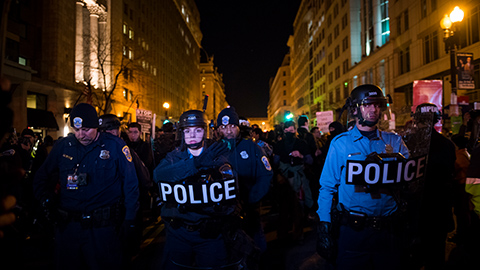
By Kaili Moss and Jillian Burford | Washington Informer
Mayor Bowser has signed the “Secure DC” omnibus bill passed by the D.C. Council last month. But we already know that this bill will be disastrous for all of D.C., especially for Black and brown residents.
While proponents claim that this legislation “will make D.C. residents safer and more secure,” it actually does nothing to address the root of the harm in the first place and instead maintains a cycle of violence, poverty, and broken community ties. The omnibus bill calls for increased surveillance, drug-free zones, and will expand pre-trial detention that will incarcerate people at a significantly higher rate and for an indeterminate amount of time before they are even tried. This bill will roll back decades of nationwide policy reform efforts and initiatives to keep our communities safe and whole, which is completely contradictory to what the “Secure” D.C. bill claims it will do.
What is unfolding in Washington, D.C., is part of a dangerous national trend. We have seen a resurrection of bad crime bills in several jurisdictions across the country — a phenomenon policy experts have named “zombie laws,” which are ineffective, costly, dangerous for communities of color and, most importantly, will not create public safety. Throwing more money into policing while failing to fund preventative measures does not keep us safe.
The D.C. crime bill and so many others like it are reminiscent of the ‘94 crime bill, which produced new and harsher criminal sentences, helped deploy thousands of police and surveilling methods in Black and brown communities, and incentivized more states to build prisons through a massive infusion of federal funding. While it is not at the root of mass incarceration, it significantly accelerated it, forcing a generation of Black and brown families into a never-ending cycle of state-sanctioned violence and incarceration. Thirty years later, despite spending billions each year to enforce these policies with many of these provisions remaining in effect, it has done very little to create long-term preventative solutions. Instead, it placed a permanent moving target on the backs of Black people, and the D.C. crime bill will do the same.
The bill calls for more pretrial detention. When our loved ones are held on pretrial detention, they are held on the presumption of guilt for an indeterminate amount of time before ever seeing a judge, which can destabilize people and their families. According to experts at the Malcolm Weimer Center for Social Policy at Harvard University, just one day in jail can have “devastating consequences.” On any given day, approximately 750,000 people are held in jails across the nation — a number that beats our nation’s capital population by about 100,000. Once detained, people run the risk of losing wages, jobs, housing, mental and health treatments, and time with their families. Studies show that pretrial detention of even a couple of days makes it more likely for that person to be rearrested.
The bill also endangers people by continuing a misguided and dangerous War on Drugs, which will not get drugs off the street, nor will it deter drug use and subsequent substance use disorders (SUDs). Drug policies are a matter of public health and should be treated as such. Many states such as Alabama, Iowa and Wisconsin are treating the current fentanyl crisis as “Crack 2.0,” reintroducing a litany of failed policies that have sent millions to jails and prisons instead of prioritizing harm reduction. Instead, we propose a simple solution: listen to members of the affected communities. Through the Decrim Poverty D.C. Coalition, community members, policy experts and other stakeholders formed a campaign to decriminalize drugs and propose comprehensive legislation to do so.
While there are many concerning provisions within the omnibus bill, car chases pose a direct physical threat to our community members. In July 2023, NBC4 reported that the D.C. Council approved emergency legislation that gave MPD officers the ability to engage in vehicular pursuits with so-called “limited circumstances.” Sgt. Val Barnes, the head of MPD’s carjacking task force, even expressed concern months before the decision, saying, “The department has a pretty strict no-chase policy, and obviously for an urban setting and a major metropolitan city, that’s understandable.” If our law enforcement officers themselves are operating with more concern than our elected officials, what does it say about the omnibus bill’s purported intention to keep us safe?
And what does it mean when the risk of bodily harm is posed by the pursuit itself? On Saturday, Feb. 10, an Eckington resident had a near-miss as a stolen car barreled towards her and her dog on the sidewalk with an MPD officer in pursuit. What responsibility does the city hold if this bystander was hit? What does restitution look like? Why are our elected officials pushing for MPD officers to contradict their own policies?
Just a few summers ago during the uprisings of 2020, we saw a shift in public perspectives on policing and led to legislation aimed at limiting police power after the highly-publicized murders of loved ones Breonna Taylor and George Floyd — both victims of War on Drugs policing and the powers gained from the ’94 crime bill. And yet here we are. These measures do not keep us safe and further endanger the health of our communities. Studies show that communities that focus on harm reduction and improving material conditions have a greater impact on public safety and community health. What’s missing in mainstream conversations about violent crime is the violence that stems from state institutions and structures that perpetuate racial and class inequality. The people of D.C. deserve to feel safe, and that includes feeling safe from the harms enacted by the police.
Kaili Moss is a staff attorney at Advancement Project, a national racial justice and legal organization, and Jillian Burford is a policy organizer at Harriet’s Wildest Dreams.
The post COMMENTARY: D.C. Crime Bill Fails to Address Root Causes of Violence and Incarceration first appeared on BlackPressUSA.
#NNPA BlackPress
Mayor, City Council President React to May 31 Closing of Birmingham-Southern College
THE BIRMINGHAM TIMES — “This is a tragic day for the college, our students, our employees, and our alumni, and an outcome so many have worked tirelessly to prevent,” Rev. Keith Thompson, chairman of the BSC Board of Trustees said in an announcement to alumni. “We understand the devastating impact this has on each of you, and we will now direct our efforts toward ensuring the smoothest possible transition for everyone involved.”
The post Mayor, City Council President React to May 31 Closing of Birmingham-Southern College first appeared on BlackPressUSA.

By Barnett Wright | The Birmingham Times
Birmingham-Southern College will close on May 31, after more than a century as one of the city’s most respected institutions.
“This is a tragic day for the college, our students, our employees, and our alumni, and an outcome so many have worked tirelessly to prevent,” Rev. Keith Thompson, chairman of the BSC Board of Trustees said in an announcement to alumni. “We understand the devastating impact this has on each of you, and we will now direct our efforts toward ensuring the smoothest possible transition for everyone involved.”
There are approximately 700 students enrolled at BSC this semester.
“Word of the decision to close Birmingham Southern College is disappointing and heartbreaking to all of us who recognize it as a stalwart of our community,” Birmingham Mayor Randall Woodfin said in a statement. “I’ve stood alongside members of our City Council to protect this institution and its proud legacy of shaping leaders. It’s frustrating that those values were not shared by lawmakers in Montgomery.”
Birmingham City Council President Darrell O’Quinn said news of the closing was “devastating” on multiple levels.
“This is devastating for the students, faculty members, families and everyone affiliated with this historic institution of higher learning,” he said. “It’s also profoundly distressing for the surrounding community, who will now be living in close proximity to an empty college campus. As we’ve seen with other institutions that have shuttered their doors, we will be entering a difficult chapter following this unfortunate development … We’re approaching this with resilience and a sense of hope that something positive can eventually come from this troubling chapter.”
The school first started as the merger of Southern University and Birmingham College in 1918.
The announcement comes over a year after BSC officials admitted the institution was $38 million in debt. Looking to the Alabama Legislature for help, BSC did not receive any assistance.
This past legislative session, Sen. Jabo Waggoner sponsored a bill to extend a loan to BSC. However, the bill subsequently died on the floor.
Notable BSC alumni include former New York Times editor-in-chief Howell Raines, former U.S. Sen. Howell Heflin and former Alabama Supreme Court Chief Justice Perry O. Hooper Sr.
This story will be updated.
The post Mayor, City Council President React to May 31 Closing of Birmingham-Southern College first appeared on BlackPressUSA.
-

 Activism4 weeks ago
Activism4 weeks agoOakland Post: Week of March 27 – April 2, 2024
-
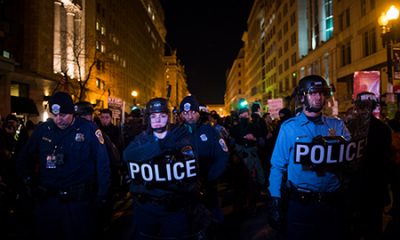
 #NNPA BlackPress4 weeks ago
#NNPA BlackPress4 weeks agoCOMMENTARY: D.C. Crime Bill Fails to Address Root Causes of Violence and Incarceration
-

 #NNPA BlackPress4 weeks ago
#NNPA BlackPress4 weeks agoFrom Raids to Revelations: The Dark Turn in Sean ‘Diddy’ Combs’ Saga
-
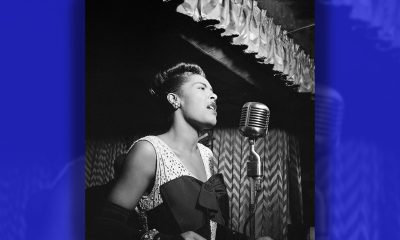
 #NNPA BlackPress4 weeks ago
#NNPA BlackPress4 weeks agoCOMMENTARY: Lady Day and The Lights!
-

 #NNPA BlackPress4 weeks ago
#NNPA BlackPress4 weeks agoMayor, City Council President React to May 31 Closing of Birmingham-Southern College
-

 #NNPA BlackPress4 weeks ago
#NNPA BlackPress4 weeks agoBaltimore Key Bridge Catastrophe: A City’s Heartbreak and a Nation’s Alarm
-

 #NNPA BlackPress4 weeks ago
#NNPA BlackPress4 weeks agoBaltimore’s Key Bridge Struck by Ship, Collapses into Water
-

 #NNPA BlackPress4 weeks ago
#NNPA BlackPress4 weeks agoBeloved Actor and Activist Louis Cameron Gossett Jr. Dies at 87





